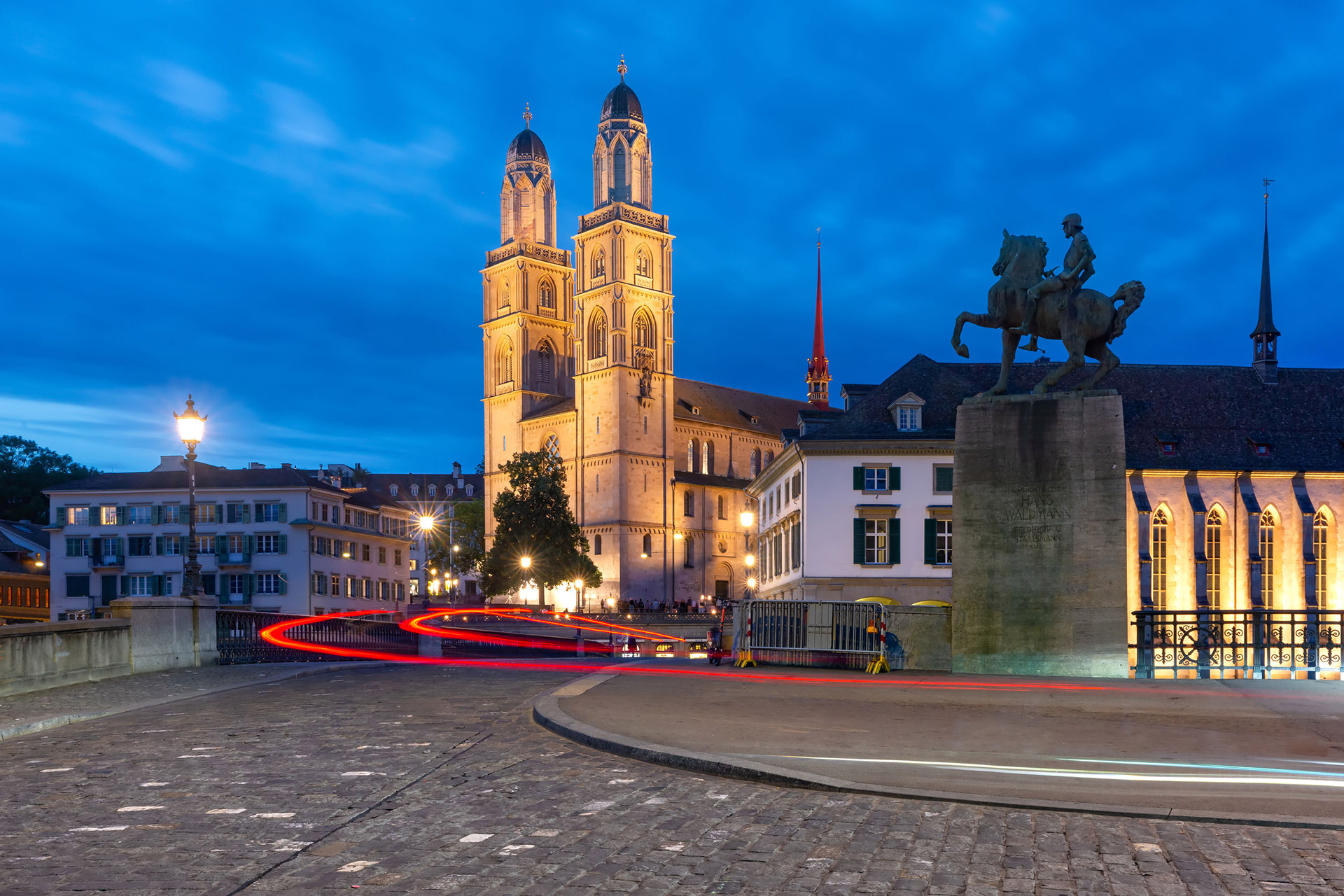05 - Zürich - A Walking Tour of the City
On the afternoon of Saturday, June 17, 2023, we will tour the city of Zurich, the largest city in Switzerland. It’s one of the most important financial centers in the world. Situated on the north shore of Lake Zurich and spanning the Limmat River, it is rich in history going back into the Roman era. But for those of us who descend from Swiss Anabaptists, the sites where key events in the Swiss Reformation and Anabaptist Radical Reformation occurred will be of special interest.
Two of the highlights will be the Protestant Grossmunster Church and the Fraumunster Church.

The Grossmünster (German pronunciation: [ɡʁoːsˈmʏnstɐ]; “great minster”) is a Romanesque-style Protestant church in Zürich, Switzerland. Huldrych Zwingli initiated the Swiss-German Reformation in Switzerland from his pastoral office at the Grossmünster, starting in 1520. Zwingli won a series of debates presided over by the magistrate in 1523 which ultimately led local civil authorities to sanction the severance of the church from the Catholic Church. The reforms initiated by Zwingli and continued by his successor, Heinrich Bullinger, account for the plain interior of the church. The iconoclastic reformers removed the organ and religious statuary in 1524. These changes, accompanied by abandonment of Lent, replacement of the Mass, disavowal of celibacy, eating meat on fast days, replacement of the lectionary with a seven-year New Testament cycle, a ban on church music, and other significant reforms make this church one of the most important sites in the history of the reformation and the birthplace of the Swiss-German reformation. Source: Wikipedia
It was also here that some of Zwingli’s young Bible students parted ways with Zwingli because they felt he compromised some of the New Testament principles he had taught them and didn’t go far enough in his attempt to reform the church to its original New Testament pattern. These young men became the leaders of the Anabaptist movement in Switzerland.

The Fraumünster (German pronunciation: [fʁaʊ̯ˈmʏnstɐ]; lit. in English: Women’s Minster, but often wrongly translated to [Our] Lady Minster) is a church in Zürich which was built on the remains of a former abbey for aristocratic women which was founded in 853 by Louis the German for his daughter Hildegard. He endowed the Benedictine convent with the lands of Zürich, Uri, and the Albis forest, and granted the convent immunity, placing it under his direct authority. Today, it belongs to the Evangelical Reformed Church of the canton of Zürich and is one of the four main churches of Zürich, the others being the Grossmünster, Prediger and St. Peter’s churches. The choir of the abbey includes 5 large stained glass windows designed by artist Marc Chagall and installed in 1970. Each of the 5 has a dominant color and depicts a Biblical story. Source: Wikipedia

